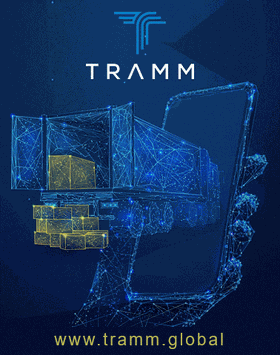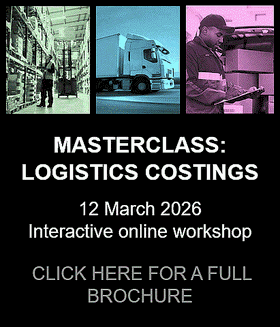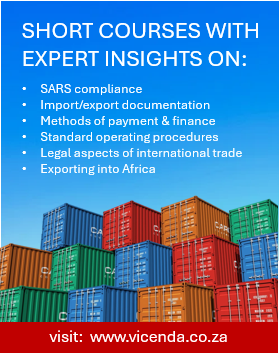South Africa’s ports play a vital role in supporting trade, investment, and economic growth. Yet despite their strategic importance, they remain among the least efficient in the world – a situation that contributes to high costs, delays, and declining competitiveness.
As the National Ports Authority (NPA) moves forward with long-term terminal concessions – often awarded to a single operator in joint ventures with other Transnet divisions – there’s growing concern that the current approach may do little to resolve the systemic issues facing the country’s port sector.
One of the most prominent voices raising the alarm is Dr Ryan Hawthorne, director at Acacia Economics and a leading expert in competition and regulatory policy. In a paper presented at the 43rd Southern African Transport Conference, Hawthorne argues that building rivalry into port operations is essential.
“If we’re simply replacing public monopolies with private ones,” he says, “we’re missing the opportunity to build a more competitive, efficient port system that truly serves the country’s interests.”

Monopoly concessions: A risky strategy
The core issue lies in how terminal concessions are structured. The NPA, still legally part of Transnet, has awarded a number of 25-year leases to single terminal operators, often involving Transnet Port Terminals as a joint venture partner.
According to Hawthorne, this approach entrenches monopoly control and limits the potential for service improvement. “Monopolies tend to charge more, deliver less, and innovate slowly,” he notes. “We’re seeing a pattern of partial privatisation rather than real reform.”
There is an emerging pattern of monopolies being partially privatised by Transnet, with little consideration for rivalry and the benefits this might bring to consumers and port users. Rather than breaking up dominant positions, the current model risks reinforcing them – just with new stakeholders.
These concerns are echoed by global benchmarking. The World Bank recently ranked Cape Town’s container terminal dead last out of 405 ports globally in 2024, with Durban and Port Elizabeth also performing poorly. “While private-sector participation is a welcome step, it risks becoming a missed opportunity if it doesn’t introduce genuine competition,” warns Hawthorne.
The case for competition
But can so-called “genuine competition” actually work? Hawthorne believes there is ample scope for rivalry within South Africa’s port system. Durban alone is expected to expand its container-handling capacity to more than 11 million TEUs – enough for multiple competing operators.
“Ports of similar size internationally to Durban’s current capacity host four or more terminal operators competing on quality and cost,” he explains. “There’s no reason South Africa can’t follow suit.”
Legal framework already in place
The Ports Act of 2005 provides the basis for introducing competition by separating the NPA from Transnet and mandating that port access be granted in a transparent and competitive manner. However, the key step of structurally separating the NPA has not been completed.
“If the NPA were truly independent,” says Hawthorne, “it would have an incentive to lease space to multiple terminal operators – not preserve the dominance of its sister company.”
What can be done now?
In the short term, Hawthorne proposes a number of practical reforms. “We need to complete the structural separation of the NPA from Transnet, as envisioned in the Ports Act. This would allow the NPA to operate independently and invest in expanding port capacity and enabling rival terminal operators, rather than protecting Transnet’s downstream interests,” he notes.
Furthermore, the Minister of Transport should issue a policy directive requiring competition assessments in all future concession processes. The new Transport Economic Regulator (TER) should be given the authority to review and, if necessary, amend monopoly concession agreements. “The Competition Commission could also be called upon to investigate exclusionary practices in port operations, including abuse of dominance or refusal to grant access to essential infrastructure,” he proposes.
Long-term vision: Foster inter-port competition
Beyond immediate fixes, Hawthorne encourages a return to inter-port rivalry, as seen prior to the 1910 formation of South African Railways and Harbours. At that time, ports like Cape Town and Durban competed actively for shipping traffic, spurring innovation and improved service delivery.
Today, similar systems exist in countries such as Brazil, Canada, and Australia, where individual port authorities operate independently under national regulatory oversight.
“We need to stop thinking of South Africa’s ports as a single block,” says Hawthorne. “Independent port authorities promoting competition within and between ports could drive the efficiency gains we desperately need.
“Competition is the missing piece in South Africa’s port reform puzzle. Without it, we risk pouring money into concessions that do little for users. With it, we unlock the real potential of our ports – for traders, for consumers, and for the economy as a whole.”
Reform cannot wait
For Hawthorne, the stakes are clear. Without decisive action, South Africa will continue to lose out on the growth its port system could deliver. “The current model is broken. If we don’t introduce competition – both within and between our ports – we’ll continue to pay the price in lost trade, higher consumer prices, and missed investment opportunities.”
With targeted regulation in the short term and bold structural reforms in the long term, South Africa’s ports could become a driver of growth rather than a bottleneck. “We’ve got the capacity. What we need now is the courage to reform,” he concludes.

The paper was authored by Dr Ryan Hawthorne, Acacia Economics (above), Nonhlanhla Msimango, National Treasury of South Afric), and Carla Orffer, National Treasury of South Africa.







